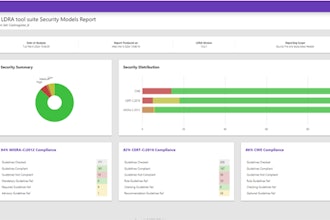According to the statistics, 47.3 percent of internet users made purchases through the Internet in 2018. It is 6 percent more compared with the year 2013. And this figure might grow, as it makes the process of shopping rather convenient. Besides, it’s not time-consuming because people don’t have to spend time on the way to the supermarket or even abroad.
In view of the increasing number of fraudulent schemes on the web, and day-fly sites which disappear after getting money, the security of the deals assumes prominence for clients. Thus, it becomes more and more difficult for e-commerce sites to head above water.
If your range of commodities is diverse and pricing is attractive, but sales leave much to be desired, it’s time to change the situation. Try to implement the following tips in practice:
Add customer notes.
The psychologists discuss the importance of references for a long time. Robert Beno Cialdini in his book “Influence: The Psychology of Persuasion” touches upon the issue of the principle of social proof which influences people when taking a decision.
The figures prove this fact:
- Customer notes might increase page view by 10 percent within 2 days.
- 63 percent of consumers prefer to buy goods on sites with ratings and reviews.
- On average, a user looks through from 4 to 7 reviews before paying for the purchase.
- 96 percent of retailers reckon that reviews contribute to better sales.
- Positive reviews serve to increase the probability of purchase by 55 percent.
- 67 percent of users give credence to reviews as a source of information.
And here is a piece of advice: show preference to authorization through social networks. Thus, potential clients will see that the reviews are submitted by real-life users. And this e-commerce site is safe to use.
Let consumers know your team by sight.
In view of the fact that some e-commerce sites are created with the purpose to gain money for nothing (when the transactions are conducted, such online shops cease to exist), it’s advisable to provide future clients with the information about your team (references to their social network profiles are welcome).
The more information people know about an e-commerce site and its team, the more credible is looks.
Demonstrate safety data sheet.
To begin with, let us define the notion of safety data sheet (SDS) of a site. SDS is data through which the site informs users that it is safe to share data with such site.
In some way, it might be compared to the submission of documents. Before entrusting your safety to a person introducing oneself to you as a policeman, you have a right to ask this person to verify his/her identity. In such a way, you’ll see for yourself that this man works for the law enforcement body, and it is worth trusting him/her.
Presence of a safety data sheet proves that:
- the e-commerce site uses https ciphering
- the site belongs to a publicly listed company (not a fake one)
- the domain name holder has reaffirmed the right on the site
Provide clients with a transparent privacy policy
It is always important to know what information is stored by the site one browses. These days, it determines whether a user will be spammed with ads or not. Besides, a client’s confidentiality is under threat.
Thus, it is recommended not to store personal information about the e-commerce site’s consumers. And of course, this fact should be highlighted in its privacy policy statement.
Make your e-commerce site safe
The security of a website influences the security of its future users. When the team of a website takes all reasonable precautions to protect the site against possible threats, the site is doomed to success.
Here’s what to do:
- protect your corporate network by means of a VPN service (hackers won’t manage to steal corporate information or monitor the activity of your users);
- inform your team about possible threats (knowledge is power);
- update the devices used for the successful work of your site on a regular basis (regular updates serve to make the site resistant to the new viruses and malware);
- don’t forget about backups (in the event an e-commerce site fails to withstand a hacking attack, the data will be restored).
Show preference to a reliable method of payment
Although it is the fact that cryptocurrency payment is the securest these days, it is not comprehensible for all users. Thus, it’s better to choose more traditional payment methods: credit and debit cards, PayPal, etc.
Also, it’s recommended to introduce an additional layer of protection to transactions of the users.
In such a way, the combination of security measures and some transparency of your e-commerce site will definitely solicit more customers and fatten the profit.
Dainan Gilmore is cryptanalyst for Bestvpnrating.























